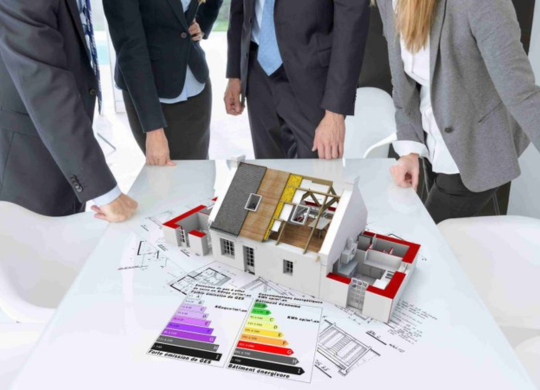Airflow | CIBSE Loads

CIBSE Loads calculates design heating and cooling loads using two methods:
- Steady state heat loss calculations to predict the heating requirements for the building
- A heat gain calculation, based on the Admittance technique, to predict the building cooling requirements. The heat gain calculations can be performed for a selected design day of the week, and for a range of design months.
- The results from these calculations can be interrogated. Several post-processing calculations can then be performed, such as radiator sizing and room air supply rates.
- Simple and fast calculations of heat loss & gain
- Incorporation of loads analysis into early design stages CIBSE Guide procedures
Airflow | CIBSE Loads
Transparency and ease of understanding of the output of loads calculations is essential for all designers hence the results of the calculations can be readily accessed in a number of straight-forward approaches:
Loads Report
- Project and Climate Summary
- Rooms Loads
Calculations and detailed results output:
- Admittance and condensation calculations can be performed on constructions
- U-Values of constructions are calculated using both CIBSE and ISO standards
- Cooling loads per room and for the whole building are calculated
- Cooling loads can be calculated for building zones
- Cooling loads results are available in both tabular and graphical form
- Peak cooling loads can be displayed in terms of sensible, latent or total loads
- Cooling loads can be displayed in terms of different components (eg. solar, casual, ventilation)
- Duct supply airflow rates or supply temperatures (to meet the cooling load) can be calculated
- Peak summer time temperatures can be calculated
- Heat losses can be displayed per room and for the whole building
- Heating loads can be calculated for building zones
- Unheated spaces (eg. roof voids) can be accounted for
- Heat losses can be displayed in terms of different components (eg. fabric, ventilation), both in tabular and in graphical form
- Plant requirements for intermittent heating can be calculated
- Degree-day calculations (CIBSE B18) can be performed
- Radiator selection can be performed using a database of radiators
There are a number of output options for the calculated results too:
- Excel output for sharing with MEP design tools
- Tables and graphs can be saved and copied and pasted into other applications (eg. Word, Excel)
- Tables of results can be customised to clients’ requirements
- Documents containing results can be created ‘live’
- Room names can be sorted and displayed in different groupings to simplify analysis
- Room details and fabric constructions can be displayed and saved in text format if required (for QA purposes)
- Results can be saved in text format if required
- Inputs to the calculations mirror that required for most other calculations within the VE, this is the advantage of the VE single data model, these include A 3D model from ModelIT, or imported from an external source, see Interoperability.
- Orientation, latitude, longitude and altitude included
- Design weather
- May be selected from the latest version of ASHRAE WDVIEW global weather database
- User-defined outdoor dry-bulb and wet-bulb temperature
- Hourly cooling loads weather from ASHRAE Standard or sinusoidal
- Shading devices (eg. blinds, louvres)
- can be assigned to glazed constructions
- can be operated according to a timed profile or to the amount of incident radiation
- Solar shading and solar tracking from SunCast. Shades and adjacent building can impact solar gains and cooling loads.
- Constructions and materials:
- User defined constructions
- Construction templates from previous projects
- Thermal templates
- Heating and cooling setpoint temperatures, with night-time setbacks.
- Relative humidity setpoints
- Minimum ventilation flow rates
- Internal Gains with hourly variation.
- Schedules/Profiles may include dynamic operation, fixed as per user-input or controlled by external variables (e.g. weather)
- Infiltration
There is considerable flexibility in the approach used to the CIBSELoads calculations, giving designers choice, these analysis options include:
- The effects of mechanical or natural ventilation can be included if required
- The effects of external shading on cooling loads can be taken into account if required
- Cooling load calculations can be performed for a selected design day of the week, and for a range of design months
- Heat transfer from adjacent rooms can be taken into account if required, for heating load calculations
Source: iesve.com
Our Services
We’re here to help and answer any question you might have.
Free Consultation About RDT Design Technologies LLP
Testimonial
"Our experience with RDT Corp has been outstanding. They delivered a customized solution that addressed all our requirements and exceeded our expectations. Their commitment to excellence is evident in everything they do."

"RDT Corp provided us with a comprehensive IT strategy that perfectly aligned with our business goals. Their proactive approach and attention to detail have made a significant impact on our company's growth. Their services are worth every penny."

"RDT Corp's expertise in digital transformation helped us streamline our processes and boost productivity. Their team is incredibly knowledgeable and always goes the extra mile to ensure our needs are met. We're thrilled with the results!"







